HEX - Challenge: Have Seeds Will Travel!
Table of Contents
About Us

We are a team of mechatronics engineers that seeks to solve problems in the area of agriculture, and in this competition, NASA gives us the opportunity to solve similar problems but in space.
We developed a modular smart growing system, which will allow the crew to plant on Mars.
Through a modular design, stackable, resistant to the conditions of Mars, and practical.
We provide the solution to the feeding of a crew of 4-6 people, focusing on vitamins and nutritional contributions under the selected crops.
We approach this challenge under a modular concept, easy to implement and that compromises the crew’s time as little as possible so that they can focus on their assigned tasks for the mission.
The system has an intelligent terrarium, an intelligent power distributor and unions that allow with solar energy to have crops in production on Mars.
Introduction
Space Gastronomy
Nutrition plays a key role in maintaining the health and optimal performance of astronauts before, during, and after spaceflight. Food flown on-orbit is not only required to be nutritious, but also must be appetizing, since it plays a critical social and psychological role during an astronaut’s mission. 1
At present, the Space Food Systems team is required to meet the nutritional needs of each crew member while adhering to the requirements of food safety, limited storage space, limited preparation options, and the difficulties of eating in microgravity. Crew members have the opportunity to supplement a few of their standard menu choices with commercial off-the-shelf items or personal favorites which provide them comfort while away from home. 1
However, pre-packaged food won’t be a solution for long-duration and exploration-class missions. When crews venture further into space, traveling for months or years without resupply shipments, the vitamins in prepackaged form break down over time, which presents a problem for astronaut health. 2
State-of-Art
NASA is looking to create food production systems to provide astronauts with nutrients in a long-lasting, easily absorbed form—freshly grown fresh fruits and vegetables in the challenging environment of deep space. 2
Vegetable Production System (Veggie)
The Vegetable Production System, known as Veggie, is a space garden residing on the space station, specially designed for studying plant growth in microgravity, while adding fresh food to the astronauts’ diet. In the absence of gravity, plants use other environmental factors, such as light, to orient and guide growth. A bank of light emitting diodes (LEDs) above the plants produces a spectrum of light suited for the plants’ growth. 2
The Veggie garden is about the size of a carry-on piece of luggage and typically holds six plants.
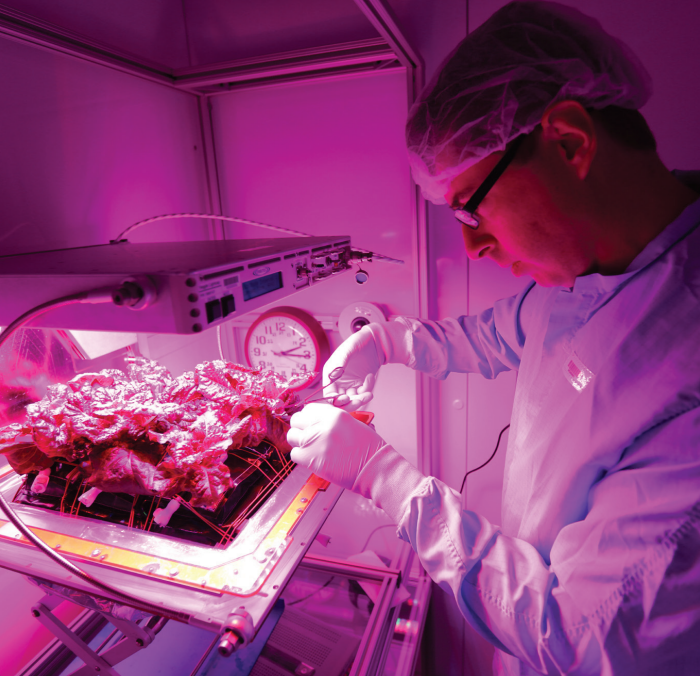
Figure 1 - A portion of of the ‘Outredgeous’ red romaine lettuce from the VEG-03 ground control unit. Recovered from Veggie’s Fact Sheet
Each plant grows in a “pillow” filled with a clay-based growth media and fertilizer. The pillows are important to help distribute water, nutrients and air in a healthy balance around the roots. Otherwise, the roots would either drown in water or be engulfed by air because of the way fluids in space tend to form bubbles. 2, 3
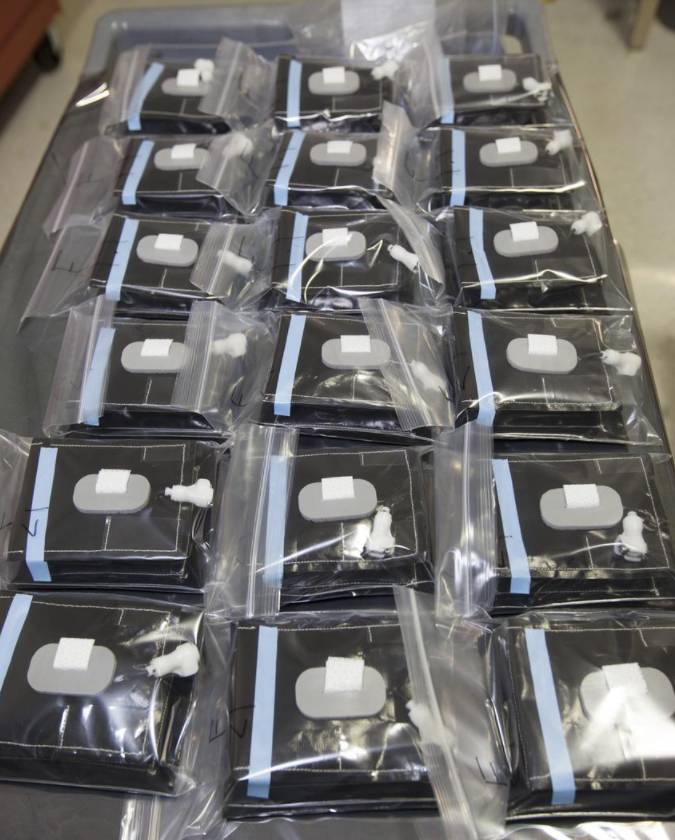
Figure 2 - 18 plant pillows for the Veg-03 experiment prepared for delivery to the International Space Station aboard the eighth SpaceX Dragon commercial resupply mission. Recovered from NASA Image and Video Library
Throughout many experiments, the veggie project attempted to ripen many seeds for human-consumption purposes, as well as non-consumable. Among the consumable crops, we can find ‘Red Russian’ lettuce, Mizuna mustard, chinese cabbage, and some more. These vegetables contains significant amount of minerals and vitamins, which are quintessential for a balanced and complete nutrition, and the last stages successfully demonstrated its production. 4
Although the implemented design shows that is possible to make many seeds grow in zero-gravity environment, it is not stackable, which means that it cannot be assembled one above other. Instead, it just expands horizontally, which can be troublesome for the reduced amount of space that the crowd already faces.
Advanced Plant Habit (APH)
The Advanced Plant Habitat (APH) is a growth chamber on station for plant research. It uses LED lights and a porous clay substrate with controlled release fertilizer to deliver water, nutrients and oxygen to the plant roots. 2
This system differs from the Vegetable Production System (Veggie) since it is enclosed and automated with cameras and more than 180 sensors that are in constant interactive contact with a team on Earth at Kennedy Space Center. Its water recovery and distribution, atmosphere content, moisture levels and temperature are all automated. Compare to Veggie, it has more colors of LED lights including red, green, blue, white, far red and even infrared to allow nighttime imaging. 2
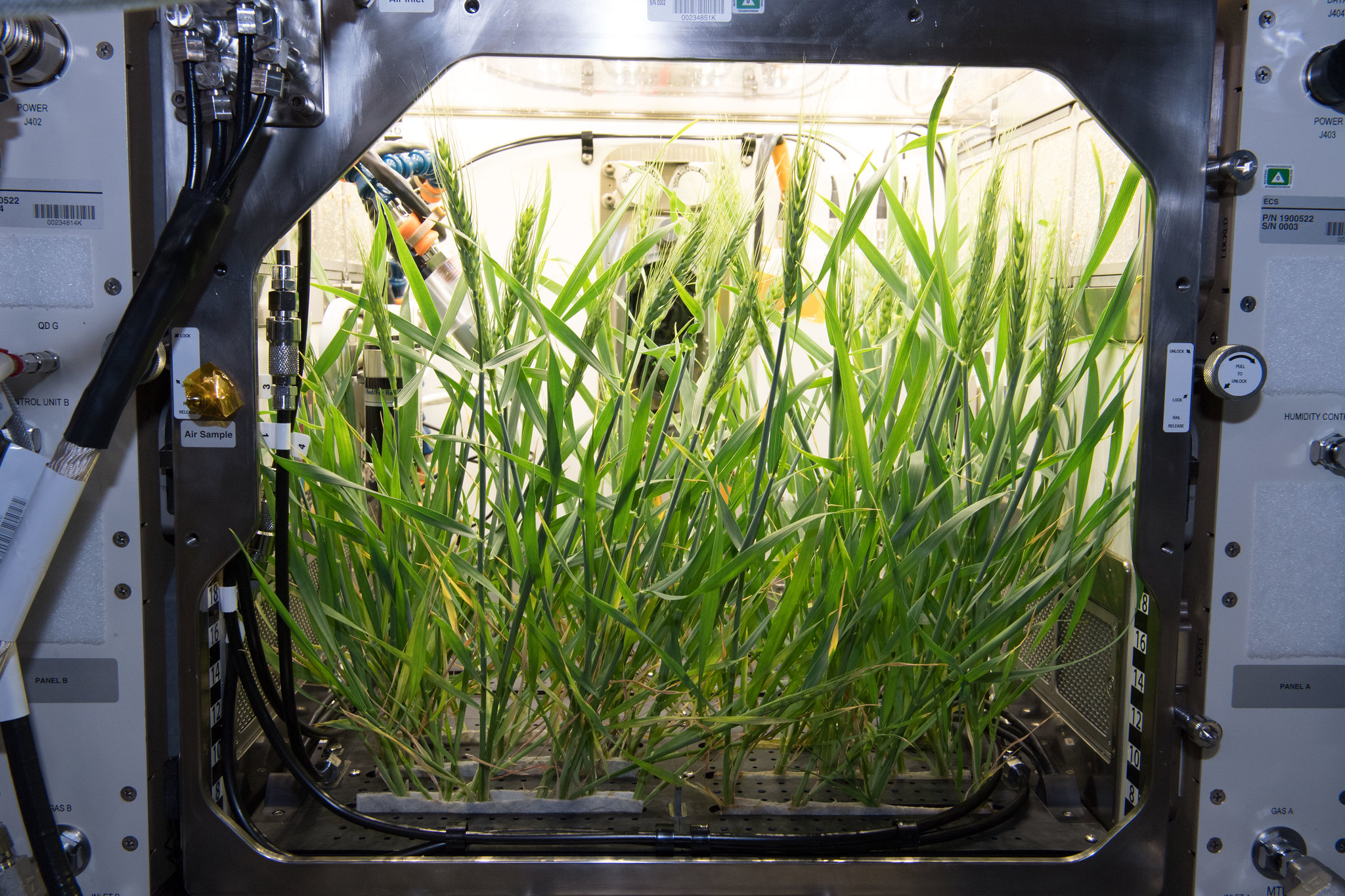
Figure 3 - First growth test of crops in the Advanced Plant Habitat aboard the International Space Station. (Arabidopsis seeds)
Even though the system is highly automated, it ultimately depends from human intervention at the Kennedy Space Center which is not suitable for missions at very long distances where the communication could be delayed for minutes or even hours regarding of the distance and bandwidth.
Proposal
Selection of crops for human consumption
The following list of crops contains some of the most relevant vegetables, about which more has been experimented throughout the history of space cultivation5,6. The first column specifies the crop or vegetable, the second one contains some of the relevant minerals and vitamins for each vegetable, along with its online source in the third column.
TABLE 1: List of some of the most researched and cultivated consumable crops for space.
| CROP | REVELANTS MINERALS CONTAINED | SOURCE |
|---|---|---|
| Lettuce | Vitamins {A, B9, C, K}, POTASSIUM, CALCIUM, PROTEIN | Romaine Lettuce: Nutrition, Calories, and Recipes |
| Wheat | Vitamins {B6, B9 or Folate}, PROTEIN, FIBER, CALCIUM | Wheat 101: Nutrition Facts and Health Effects |
| Swiss chard | Vitamins {A, C, E, K}, PROTEIN, CALCIUM, POTASSIUM, FIBER | Swiss Chard: Nutrition, Benefits and How to Cook It |
| Radish | Vitamins {B6, B9, K}, POTASSIUM, CALCIUM, MAGNESIUM, PROTEIN | Are Radishes Good for You? |
| Cabbage | Vitamins {B6, B9, C, K}, CALCIUM, FIBER, POTASSIUM, PROTEIN, | 9 Impressive Health Benefits of Cabbage |
| Peas | Vitamins {B6, B9}, PROTEIN, FIBER, POTASSIUM, | Black-Eyed Peas (Cowpeas): Nutrition Facts and Benefits |
| Rice | CARBOHYDRATES, PROTEIN (BUT IN SMALL QUANTITY) | Is Rice a Grain? |
| Onion | Vitamins {B6, B9, C}, POTASSIUM, FIBER, PROTEIN | Onions 101: Nutrition Facts and Health Effects |
| Garlic | Vitamins {B1, B6, C}, FIBER, CALCIUM, POTASSIUM | 11 Proven Health Benefits of Garlic |
| Cucumber | Vitamins {B, C, K}, POTASSIUM, PROTEIN, FIBER | Is Cucumber Good for Diabetes? |
| Potato | Vitamins {B6, B9, C}, POTASSIUM, FIBER, PROTEIN | 7 Health and Nutrition Benefits of Potatoes |
| Mizuna mustard | Vitamins {A, C, K}, CALCIUM, PROTEIN | What Is Mizuna? All About This Unique, Leafy Green |
Among these, the crops that stand out not only for their richness and nutritional variety, but also for the reliability they present at the moment of being conceived for consumption in a prudent time, have been selected 4. Some of the most important vitamins (Group B, C, K) are emphasized, along with minerals of utmost importance for body integrity (fiber, calcium, magnesium, potassium, etc.). Many of these were implemented in Veggie & ADP projects 7.
- Lettuce: To be precise, ‘Outredgeous’ red romaine lettuce, cultivated in the Veggie project. 4
- Radish: Cultivated in the APH project, during the Plant Habitat-02 (PH-02) experiment. 8
- Cabbage: To be precise, ‘Tokyo Bekana’ Chinese cabbage, cultivated in the Veggie project. 4
- Mustard: To be precise, Mizuna mustard, cultivated in the Veggie project. 4
- Wheat: Cultivated in the APH project. 7
With these crops, it is possible to arrange several menus that offers a variety of complete and balanced plates, not only for nutritional purposes, but also for the variety of tastes directed to each member of the tripulation.
Project Overview
We designed a modular system capable of deploying individual pots where a crop will be planted, grown and harvested. These pots will act as an enclosed environment for the crop to get the right temperature, light, humidity level, air flow, water and fertilizers. Both water and fertilizers will be injected through a vascular system integrated in the pots, reaching the points where the plant can access to them through wicking (similar as Veggie does). 4
The purpose of this design is to make the most of the available space of the vehicle. We visualize that at the beginning of the journey, most of the stowage space will be occupied by prepackaged food, and a little space will have our HEX pots un-assembled. While the crew eats the food, the space from the prepackaged food will be free, so the astronauts will be deploying the HEX pots in that space and planting the crops. This will keep a continuous food production system even when the prepackaged food finally depletes.
Diagrams
The following diagram shows the main components of a HEX pot. The air flow system consists of air conduits where the gases will flow, and a fan to provide the force needed to move the air. The water and fertilizer system will hydrate and bring all the necessary nutrients for the plant through wicking. And finally, the LEDs will bring the right light level and color in function of which crop is planted on the pot.
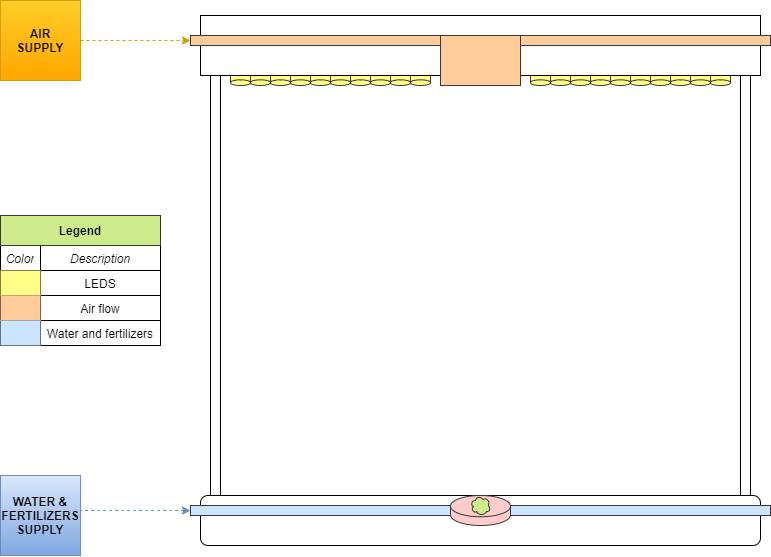
Figure 4 - Systems present on each HEX Pot
Since the HEX pots has a modular design, every single face at the base and top of the pots has a port to connect to the water and fertilizer system, and air flow system of other HEX pot. With a HEX union (shown at the Figure 10), the pots seals hermetically the ports and also this union provides electrical conductivity to supply other pots with energy.
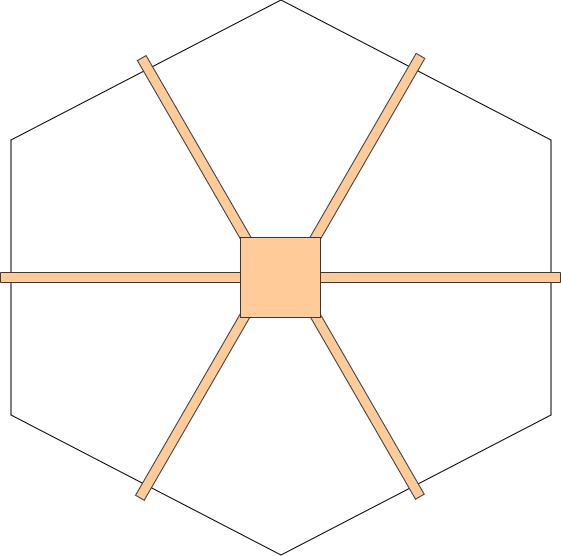
Figure 5 - Top view from a HEX Pot. This shows how each face has an access to connect to any other HEX Pot.
3D Model
We develop a solution using reliable sources.
We exhaust the design process from the selection of relevant materials for this application, to the system approach in question.
The model consists of 3 important elements, the main unit where the crops will be, the energy supply unit, where we will have the inputs for the plants and can be recharged by solar energy, and some couplings that connect the modules electrically and physically. individual.
This means that our proposal is stackable, modular and interconnected. Which puts us in front of a system designed for efficient storage and operability.
The materials used for the main module were:
- Transparent panel: Polycarbonate with antistatic agents, and antioxidants additives
- Gripper, support frame: High Density Polyethylene (HDPE)
- Base: Rubber
The main unit is a hexagonal smart terrarium, with materials able to withstand the context of a mission to Mars, to interconnect with other terrariums and to keep the crops in optimal conditions for their growth.
At the design stage, we take into account the ease and maneuverability of the individual elements when positioning them inside and outside the warehouse.
The proposed solution will put at the command of a space crew a crop that meets the nutritional and vitamin contributions they need, with a crew of 4-6 people on board.
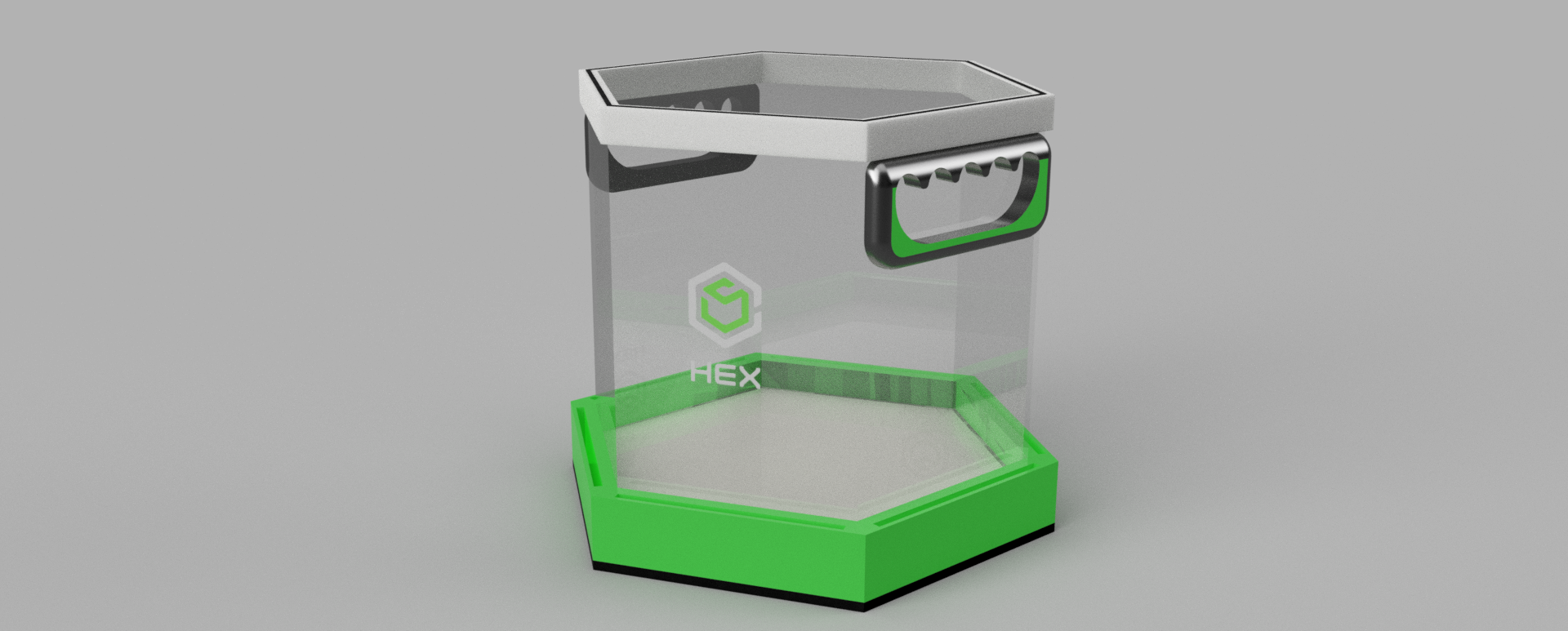
Figure 6 - HEX Isometric View.

Figure 7 - HEX Close-Up.
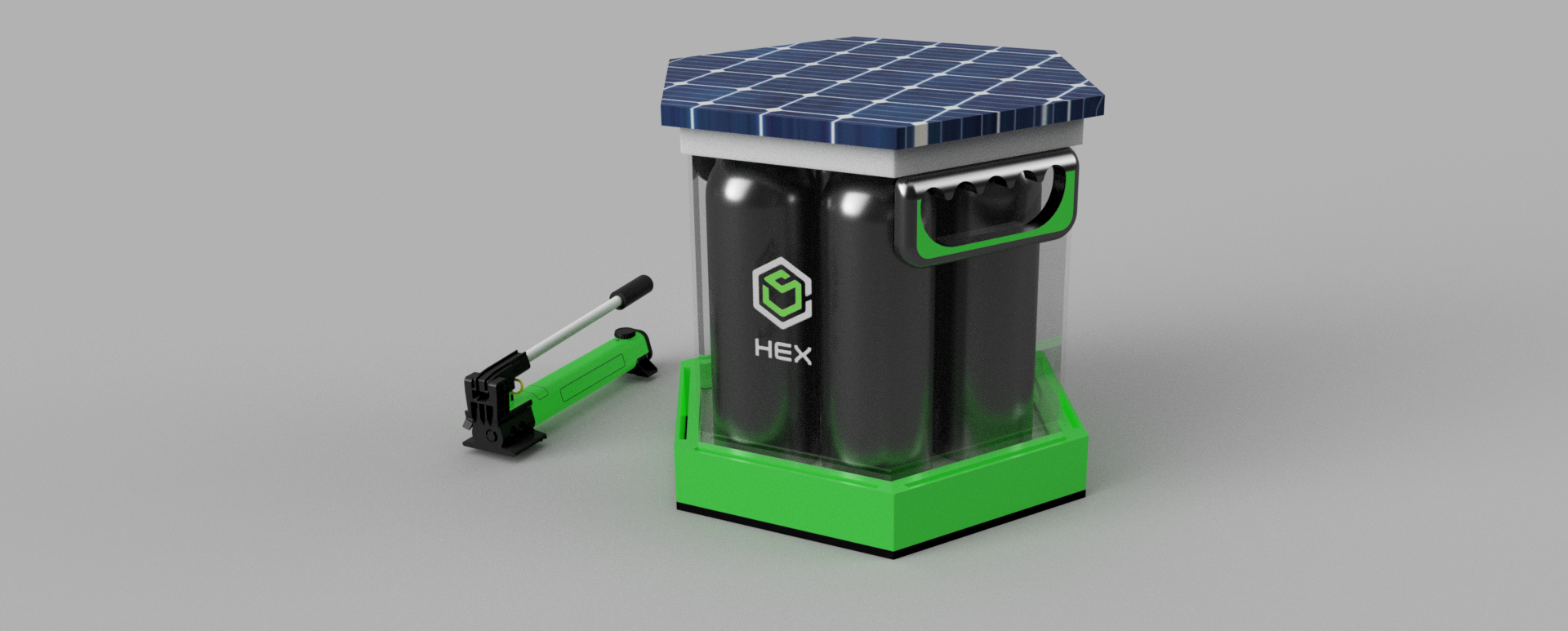
Figure 8 - HEX with Solar Panel attachment, and manual pump.
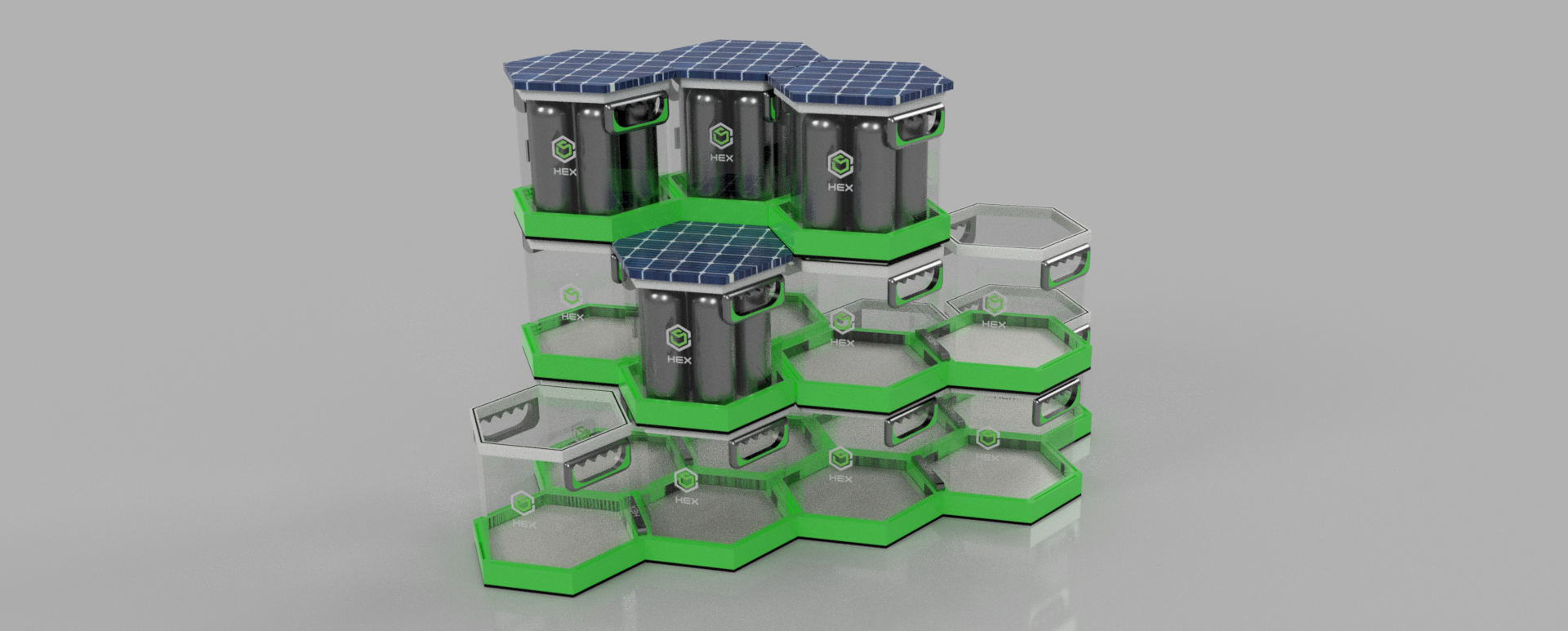
Figure 9 - Complex HEX assembly.
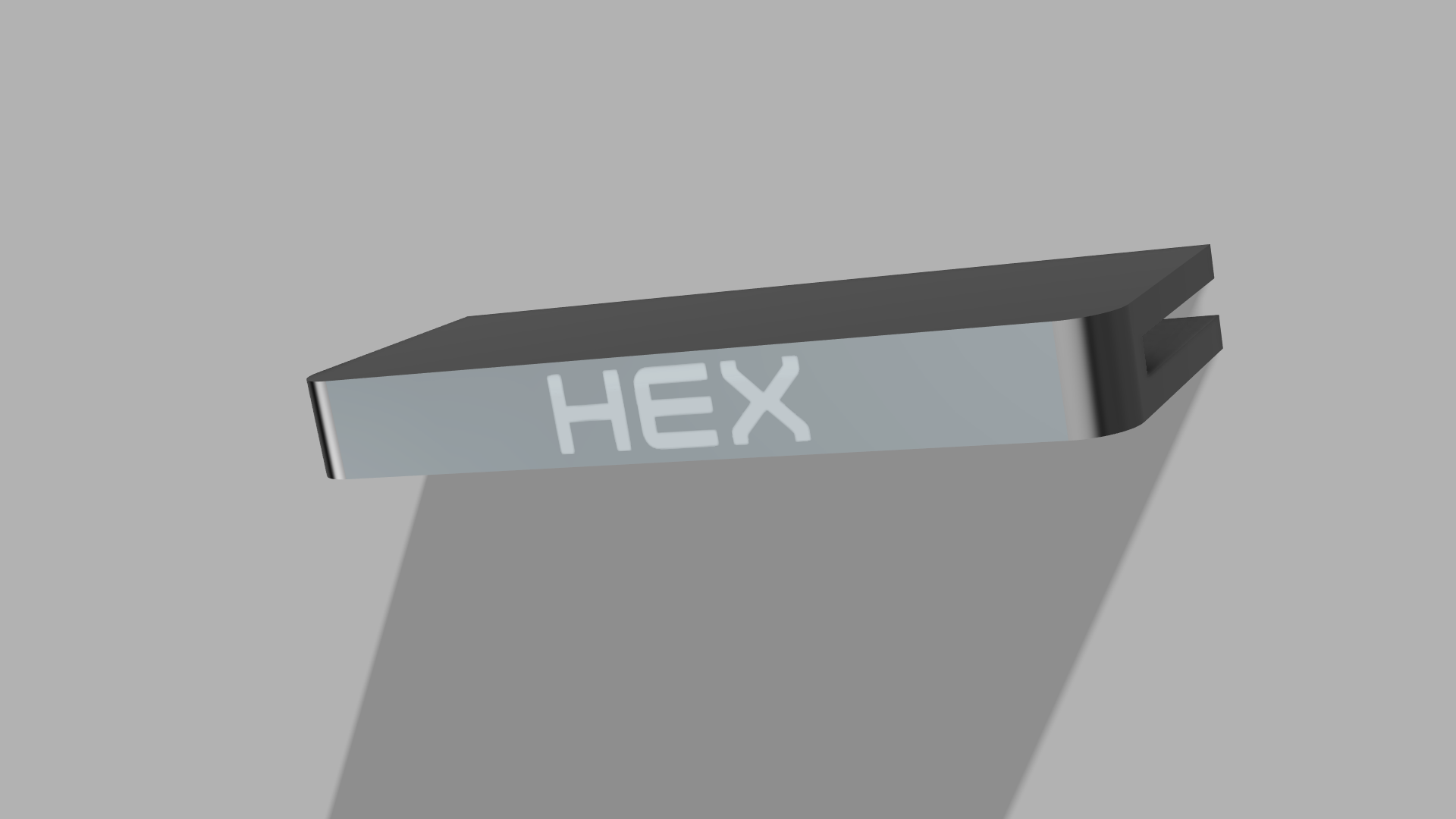
Figure 10 - HEX Union.
Conclusion
A decentralized and multi-attachable cultivation system was designed capable of producing several species of vegetables in a given period of time, in order to feed a population of 4-6 people who would go aboard a spacecraft, suspended in space for several months, with the additional ability to provide food once landed on Mars. The system has several units that are capable of being assembled, and between them energy is distributed thanks to a simple coupling that ends up electrically connecting each one with a main storage unit, which consists of a photovoltaic panel that would supply electrical energy from the sun. , once perched on Mars. This design allows an unprecedented use of space inside the ship, thus being able to provide the crew with sufficient resources, while those consumed would be in production. In general, this design and its capabilities would provide future missions with a solution to the problem of food production and consumption along the way.
Future Work
-
Cultured Meat: Not only crops could be grown in a restrained environment such as space, we believe that lab-grown meat will sum up to the food production ecosystem in space in the following years. In-vitro meat production is not a new technology on Earth, and even in September of 2019 the first cultured meat was cultivated in space by Aleph Farms in partnership with Bioprinting Solutions. This experiment was conducted by the cosmonaut Oleg Skripochka at the International Space Station (ISS). 9, 10. Recently, the European Space Agency (ESA) publish that they are seeking proposals to investigate the application of cellular agriculture to produce cultured meat during future long-term space mission. 11
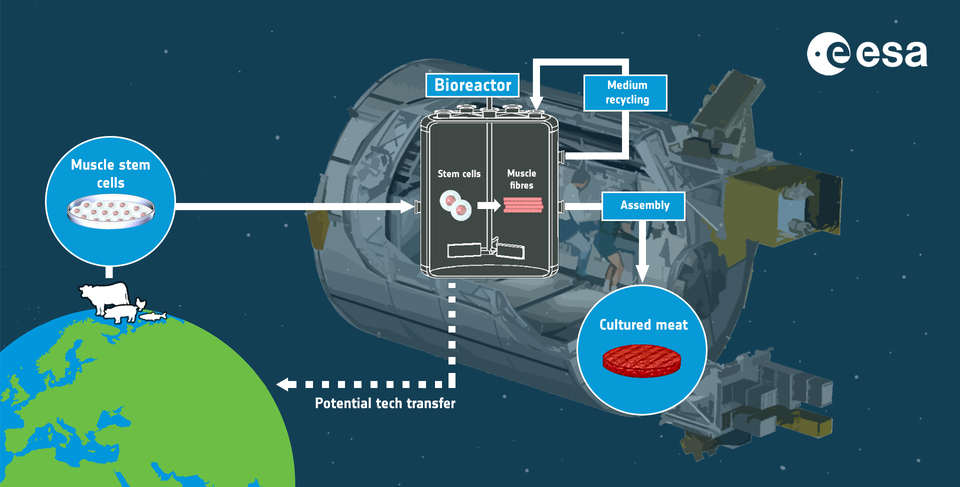
-
Cooking and preparing complex food recipes: With recent experiments related to cooking in space, the products obtained from the crops and cultured meat production systems allows astronauts to prepare more complex meals in space, improving both astronaut’s nutrition and psychological state during their mission. An example of this new hardware is the Zero-G Kitchen Space Oven, which allowed astronauts to bake cookies at the International Space Station (ISS). 12
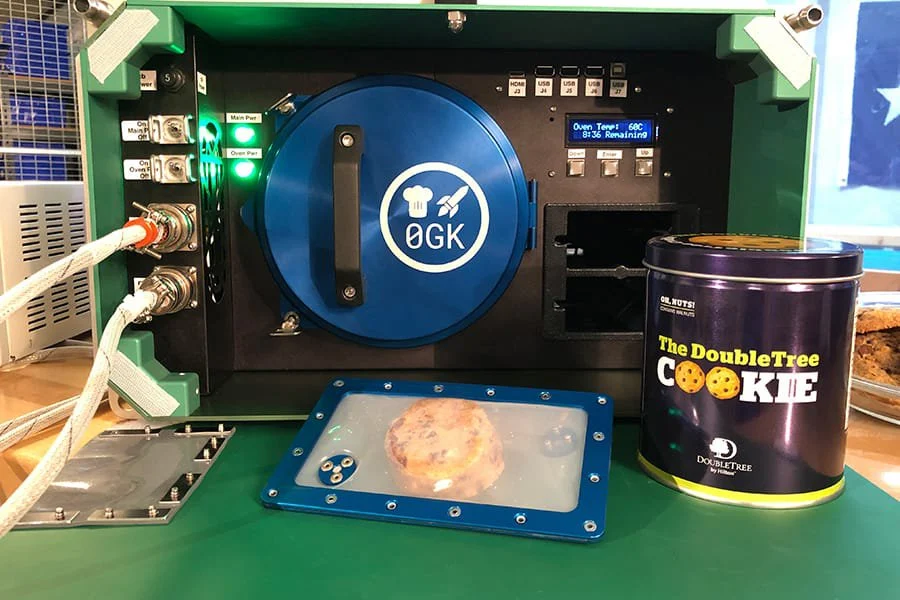
Here is a video of the cookies baked at the ISS:
References
- [1] Space Food - NASA
- [2] Growing Plants in Space - NASA
- [3] Veg-03 Plant Pillows Readied at Kennedy Space Center for Trip to Space Station – Kennedy Space Center (nasa.gov)
- [4] Veggie Fact Sheet (nasa.gov)
- [5] Agriculture for Space: People and Places Paving the Way (degruyter.com)
- [6] (PDF) Plants for human life support in space: From Myers to Mars (researchgate.net)
- [7] Giving Roots and Shoots Their Space: The Advanced Plant Habitat - NASA
- [8] Astronauts Harvest Radish Crop on International Space Station - NASA
- [9] MEAT FOR SPACE — (aleph-farms.com)
- [10] Meat Grown in Space for the First Time Ever - Space
- [11] ESA - ESA investigates cultured meat as novel space food
- [12] Space Oven - Zero G Kitchen